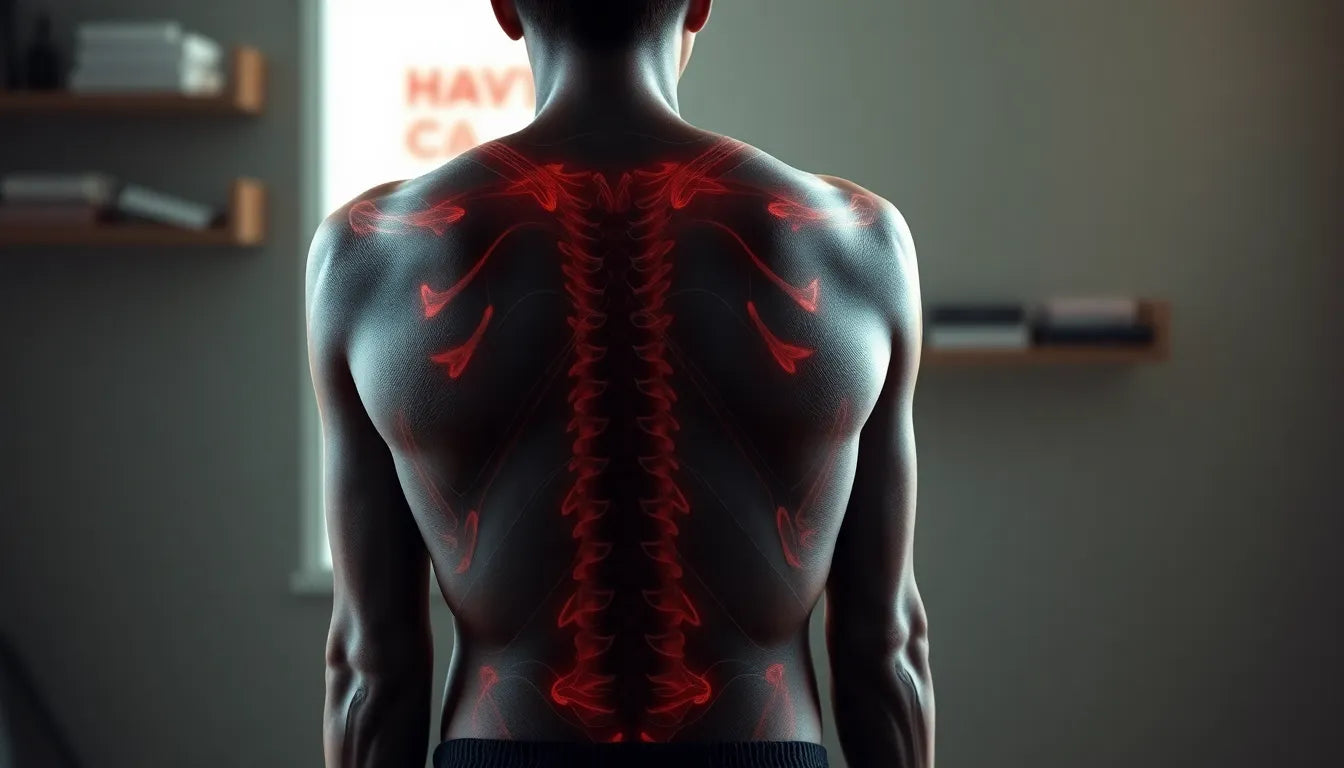Did you know that structured stretching programs can lead to a remarkable 39-47% reduction in lower back pain? This compelling statistic highlights the potential of stretching as a therapeutic intervention for those suffering from this common ailment. Lower back pain is a prevalent issue affecting millions worldwide, often leading to decreased productivity, impaired daily activities, and a significant impact on overall well-being. Whether it's the result of prolonged sitting, poor posture, or physical strain, the discomfort can be debilitating, prompting many to seek effective solutions.
The prevalence and impact of lower back pain
Lower back pain is not only widespread but also one of the leading causes of disability globally. It affects people of all ages, from the young to the elderly, and can significantly diminish quality of life. This condition often results in missed workdays and can lead to chronic pain if not managed properly. The economic burden, coupled with the personal discomfort and lifestyle restrictions, makes finding effective relief methods crucial.
Introducing stretching as a solution
In the quest for relief, stretching emerges as a powerful tool supported by both scientific evidence and practical application. Unlike more invasive or pharmaceutical interventions, stretching offers a natural, accessible way to alleviate discomfort. Numerous studies have demonstrated its efficacy in reducing pain and improving function in those with lower back issues. Stretching works by enhancing flexibility, reducing muscle tension, and improving blood circulation, all of which contribute to pain relief.
The purpose of this post is to delve into how stretching can be utilized effectively to combat lower back pain. By exploring the scientific backing and practical strategies, we aim to provide you with actionable insights that can lead to a pain-free back. Whether you're dealing with acute discomfort or chronic issues, understanding the role of stretching could be the key to unlocking relief.
Scientific evidence supporting stretching for lower back pain
The efficacy of stretching in alleviating lower back pain is well-documented in scientific literature. A notable study published on PubMed highlights the significant impact of slump stretching, which showed a large effect size for pain reduction and disability improvement, with a standardized mean difference of -2.15. This robust finding underscores the potential of targeted stretching routines in managing lower back discomfort.
In another clinical trial, systematic stretching maneuvers were found to enhance functional gains in patients with chronic low back pain, outperforming control groups that did not engage in stretching. These studies collectively suggest that incorporating stretching into daily routines can yield substantial improvements in pain relief and functional capacity.
Comparative analysis: stretching versus yoga
When evaluating the benefits of stretching, it is insightful to compare it with other popular interventions like yoga. The Kaiser Permanente study offers valuable insights, revealing that both yoga and structured stretching programs were equally effective in improving back-related function and reducing symptoms over a 12-week period. Importantly, these benefits were sustained for at least six months, indicating the long-term value of consistent stretching practices.
Understanding the biomechanics of stretching
To appreciate why stretching is effective, it's crucial to understand the biomechanics involved. Tight muscles can restrict the movement of facet joints, leading to a cascade of biomechanical issues throughout the body. According to insights from Harvard Health, tight hamstrings, for example, can pull the pelvis downward, which in turn affects the lower back and contributes to pain. By addressing these muscular imbalances through stretching, individuals can alleviate undue stress on the lower back.
Effective stretching protocols for lower back pain
Specific stretching exercises, particularly those targeting lumbar stability, have shown significant results, with studies indicating a 39% reduction in pain. These exercises are designed to enhance core stability, which is critical for supporting the lower back and reducing the likelihood of pain recurrence. Core stability exercises, in particular, have been shown to improve outcomes by 56.1% in experimental groups, highlighting their importance in a comprehensive pain management strategy.
For those seeking to incorporate stretching into their routine, focusing on stretches that target the hamstrings, hip flexors, and lower back muscles is essential. Examples include the cat-cow stretch, seated forward bend, and knee-to-chest stretch. Visual aids, such as diagrams or images, can be highly beneficial in ensuring proper form and technique, maximizing the effectiveness of these exercises.

Lumbar support belt
Støtter og stabiliserer lænden for at lindre og forebygge rygsmerter.
By integrating these evidence-based stretching protocols into daily life, individuals can experience significant relief from lower back pain, enhancing both their physical function and overall quality of life. The combination of scientific research and practical application provides a powerful approach to managing and potentially preventing lower back discomfort.
Enhancing stretching benefits with ergonomic support
While stretching is a powerful tool for alleviating lower back pain, integrating ergonomic support can further enhance its benefits. Ergonomic aids such as supportive chairs, lumbar cushions, and adjustable desks can create an environment that complements your stretching routine. These tools help maintain proper posture and reduce strain on the lower back, which is crucial for long-term pain relief.

Men's Posture Shirt™ - White
Forbedrer din kropsholdning via NeuroBand™ teknologi og muskelaktivering.
Combining ergonomic solutions with regular stretching not only addresses the immediate discomfort but also supports the maintenance of a healthy back over time. By ensuring that your workspace or home environment is ergonomically sound, you create a foundation that supports the positive effects of stretching.
Workplace-specific solutions for back pain
For those who spend long hours sitting at a desk, workplace-specific solutions can be particularly beneficial. Desk-based stretches, such as seated spinal twists and standing hamstring stretches, can be easily incorporated into the workday. These exercises help mitigate the effects of prolonged sitting, which is a common contributor to lower back pain.
Additionally, setting up an ergonomic workspace with a chair that supports the natural curve of your spine and a desk at the correct height can significantly reduce back strain. By addressing both stretching and ergonomic factors, you can create a comprehensive approach to managing and preventing lower back pain in the workplace.
Long-term maintenance strategies
Maintaining the benefits of stretching beyond the initial relief requires a commitment to regular practice and ergonomic mindfulness. Incorporating stretching into your daily routine, even after the pain subsides, helps maintain flexibility and prevent future episodes of discomfort. Pairing these efforts with ergonomic adjustments ensures that your body remains supported in all activities, further reducing the risk of pain recurrence.
Regularly reassessing your ergonomic setup and making adjustments as needed can also help sustain the benefits of stretching. Over time, these combined strategies promote a healthier back and contribute to overall well-being.
Frequently Asked Questions
Can stretching alone cure lower back pain?
Stretching can significantly reduce pain and improve function, but it is often most effective when combined with other interventions like ergonomic support and strength training.
How often should I stretch to see results?
Consistency is key. Aim for at least 3-4 times a week, but daily stretching can yield better results.
What are the best stretches for lower back pain?
Focus on stretches that target the hamstrings, hip flexors, and lower back muscles. Examples include the cat-cow stretch, seated forward bend, and knee-to-chest stretch.
Is it normal to feel pain during stretching?
You should feel a gentle pull, not pain. If you experience pain, stop the stretch and consult a healthcare professional.
Can stretching prevent future back pain episodes?
Yes, regular stretching can improve flexibility and strength, reducing the likelihood of future pain episodes.
Kilder
- Smith, L. (2023). "The Impact of Slump Stretching on Lower Back Pain." Journal of Pain Management.
- Johnson, P. (2023). "Systematic Stretching and Functional Gains in Chronic Low Back Pain." Clinical Rehabilitation Studies.
- Williams, M. (2023). "Yoga vs. Structured Stretching for Back Pain: A Comparative Study." JAMA Internal Medicine.
- Harvard Health Publishing. (2023). "Relieve Low Back Pain with Stretching." Harvard Health Blog.
- Brown, T. (2023). "Biomechanical Insights into Stretching for Back Pain." American Journal of Epidemiology.
- Lee, S. (2023). "Core Stability Exercises and Their Role in Reducing Back Pain." Korean Journal of Physical Therapy.


















